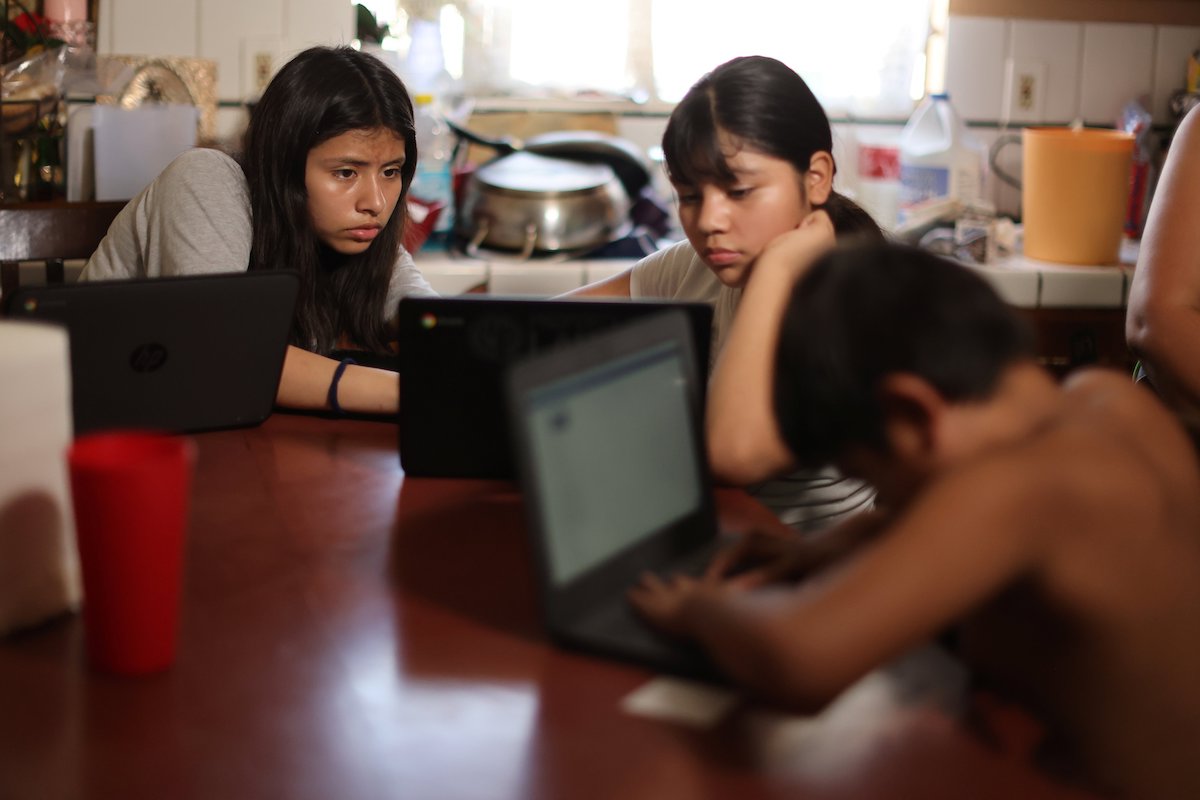WASHINGTON (CNS) — There has been much talk in the United States on the “digital divide,” about how many — really, too many — families lack internet access, which is now considered a must-have in commerce and education.
Even though the divide has been narrowed in recent years, internet access can be likened to the folds of an accordion playing “Lady of Spain”: Now you see it, now you don’t.
A new survey conducted by Rutgers University’s School of Communication and Information and commissioned by the New America think tank, formerly the New America Foundation, illustrates just how those gaps manifested themselves in the first year of the coronavirus pandemic.
Rutgers did the survey by phone — there was no online option, tellingly — of more than 1,000 parents of children ages 3-13, all with household incomes below $75,000, the national median for U.S. families.
It was conducted in March and April, one year into the pandemic, but also at a time when respondents could envision a future that wasn’t based entirely on at-home learning.
“When the pandemic shifted schooling into remote learning, a stable internet connection and functional digital device were no longer part of a quality education; they became the only way for families with school-aged children to continue learning at home,” said the study, “Learning at Home While Under-Connected.”
There are more key findings in this survey than you can shake a stick at.
Home internet access and computer ownership rates went up from 64% in 2015, when Rutgers first did this survey, to 84% today, but one in seven children whose families earn less than $75,000 per year still lack any broadband access.
Of that 84%, though, 56% of these families found their internet speed was too slow to support what they are doing, and another 18% say their service is intermittent because they cannot consistently afford to keep it on. Some families relied exclusively on cellphones to get online, which in many cases comes with data limits they bumped up against, especially when sharing it with others in the household.
Fifty-three percent of remote students experienced access disruptions — sometimes more than one kind — at some point during the past year: 34% were unable to participate in class or complete their schoolwork due to lack of internet access; 32% had to go to their school to do their schoolwork on a smartphone; and 21% were unable to participate in school or finish homework because they could not access a computer.
“The phrase ‘digital divide’ frames this as binary — there is no access or there’s all access,” said Rutgers’ Vikki Katz, who was part of the survey team. “This study gives a powerful argument for why we need to reframe the definition of ‘access.'”
She added, “Education technology is going to make up a bigger proportion of what we’re doing in school moving forward. We’re not putting the genie back in the bottle.”
In families headed by immigrant Hispanic parents, just 72% have broadband service, compared with 80% of white families, 91% of families with U.S.-born Hispanic parents and 92% of Black families. A plurality of 35% of immigrant Hispanic families cite expense as the major factor, while 19% say they do not really need the internet, and 12% say there is no good service available in their community.
Among families who have broadband home internet service, 56% say their service is too slow, and 18% say their service has been cut off at least once in the past 12 months due to trouble paying for it.
Among those who only have internet access via a smartphone or tablet, 34% say they hit the data limits in their plan at least once in the past year, preventing them from being consistently connected; 28% say they have a hard time getting as much time on devices as they need, because too many people are sharing them; and 16% say their mobile phone service has been cut off at least once during the past year because they could not pay for it.
Among those with a computer at home, 59% say it does not work properly or runs too slowly, and 22% say it is hard to get time on it because there are too many people sharing it.
The proportion of lower-income families who are under-connected hardly changed at all between Rutgers’ 2015 and 2021 surveys, despite large increases in rates of home broadband and computer access.
Majorities of Hispanic (66%) and Black (56%) parents report that their children experienced these obstacles to school participation, compared with 42% of white parents, the survey said.
Among families headed by immigrant Hispanics, 75% have experienced some of these disruptions in learning, with 52% cite lack of internet access as the most likely cause for students being unable to attend school or do their schoolwork.
Come fall, half of parents whose children will be entering first grade or higher say the most important priority for school next year is either their child’s social and emotional well-being, or simply getting to spend time with other kids, cited by 30% and 20%, respectively. By contrast, just one-third of parents say academic issues are most important for their child when they go back to school.
The full “Learning at Home While Under-Connected” survey can be found online at https://bit.ly/3xcf8he.







